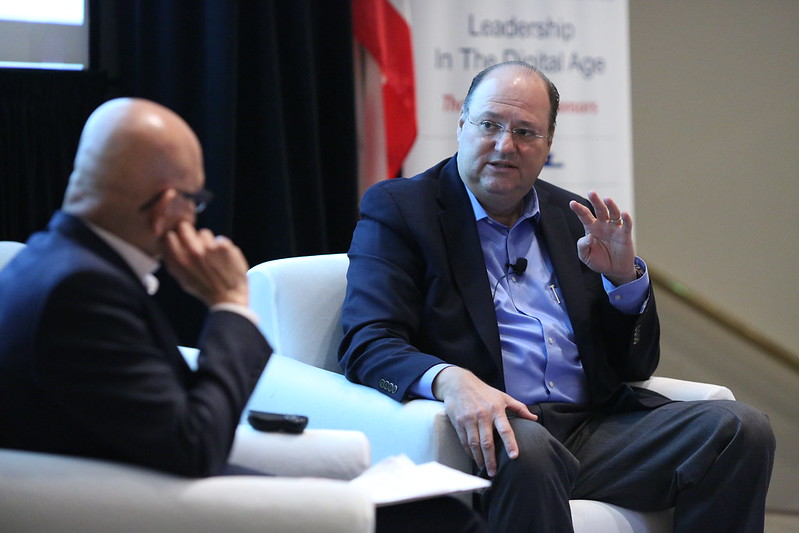Reinvention at Scale: The Role of Chief Digital Officer at GE by CDT

“Predix is our Uber,” said Bill Ruh, CEO of GE Digital and Chief Digital Officer of General Electric. Ruh was speaking of GE’s cloud-based software and analytics platform that supports such business lines as aviation, healthcare, mining, oil and gas, and rail. Predix is to these industries what Uber is to households: a platform for maximizing the usage and performance of assets.
Especially other people’s assets.
That’s the idea behind Predix. It’s not just a technology for GE’s own product divisions; it’s a service for GE’s industrial customers whether they use GE’s products or not. Ruh discussed GE’s strategy at the Center for Digital Transformation’s annual conference at The Paul Merage School of Business at UC Irvine on March 24.
He said Predix is an element of GE’s broader vision for the industrial Internet, which he expects to be a $225 billion market opportunity by 2020. Predix realized $300 million in revenues in its first year, and so GE CEO Jeffrey Immelt upped the goal to $500 million in the coming year. “We have transformed 60 percent of our revenues,” said Ruh, by cultivating B2B customers and divesting B2C holdings in media, finance, and appliances. What else did he do?
Put the right talent in the right roles
Ruh worked with Immelt to design what he described as an L-shaped business, where digital would be both a separate unit and a capability that cut across all other lines. He put a chief digital officer in every business to manage its digital portfolio, just as a chief brand officer manages a portfolio of brands—at the intersection of customer needs and the firm’s expertise.
“Portfolio management is the hardest thing to get right,” he said, because 90 percent usually stinks. He told his CDOs to develop a process for quickly identifying the winners in their portfolio—and cutting the stinkers. “Great portfolio managers are hard to find.” He pointed to Steve Jobs, Bill Gates, and Larry Page as examples of strong portfolio managers.
Give clear guidance and a model for achievement
Rather than thinking in terms of product or service portfolios, Ruh focused his CDOs on achieving “patterns of outcomes,” such as growth or greater efficiency. How do you get returns? How do you unleash scale? Those were the driving questions. Consider the airline business. Forty one percent of flight delays are caused by unplanned maintenance, said Ruh. So GE zeroed in on predictive maintenance, combining data analytics with apps for jet parts so that mechanics could fix whatever needed fixing before it failed.
Ruh was clear about GE’s value proposition: “We don’t do consulting or implementation.” GE developed Predix not as a solution itself but as a platform for building outcomes. The bottom line: “Technology is secondary,” Ruh said. If CDOs do not start with the end in mind, then they will add “zero value to the process.”
